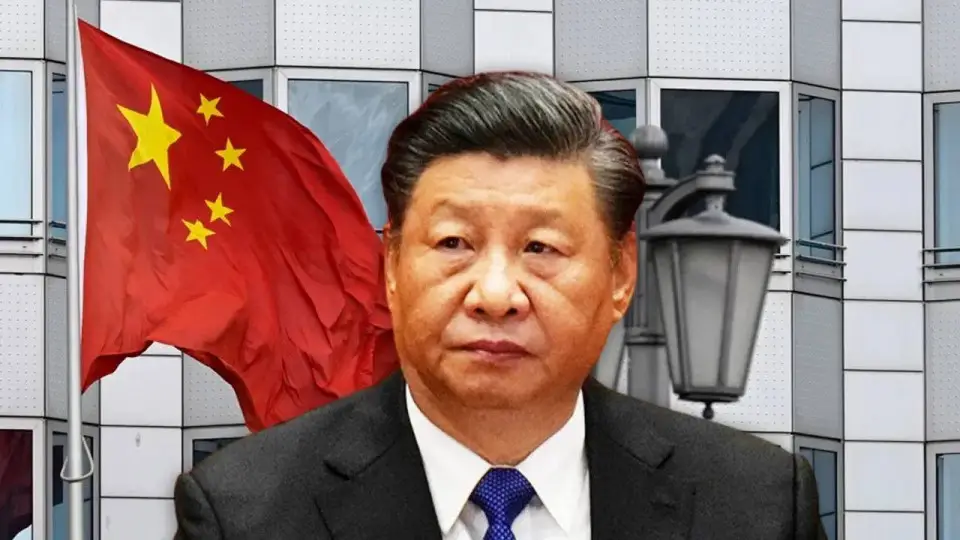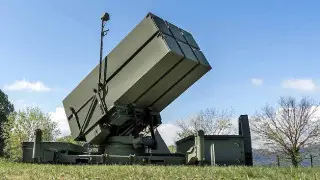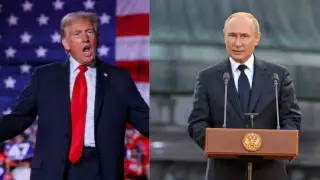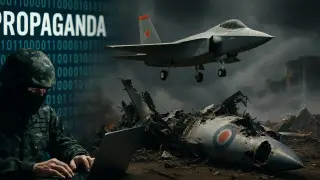
Credit:Top Indian News
New Delhi: The latest report by the US-China Economic and Security Review Commission has revealed that China allegedly engineered fake, AI-generated images of a crashed Rafale fighter jet soon after India carried out Operation Sindoor. According to the report, these visuals were circulated through fabricated social media accounts posing as international defence analysts. The intention was to influence the global perception of defence equipment and weaken trust in the Rafale platform used by the Indian Air Force. Experts believe the operation was part of China’s grey-zone strategy to shift defence narratives without entering direct conflict.
Was Rafale Really Defeated In Combat?
The report states that China created digital images showing wreckage of fighter aircraft, falsely suggesting that India’s Rafale jets were shot down by Chinese systems. These visuals were made to appear authentic and were targeted at defence communities across social media. In reality, no such incident had taken place, and Indian officials immediately denied any loss. However, the timing of the campaign, just after Operation Sindoor, was seen as deliberate. Analysts suggest that China intended to cast doubts about India’s strike capability and promote fear of Chinese technology.
How AI Was Used As A Psychological Weapon
Instead of using traditional military force, China allegedly used artificial intelligence to manipulate global opinion. By producing computer-generated crash scenes and circulating them through anonymous accounts, it attempted to create a false belief that Rafale is unreliable in high-intensity warfare. Defence observers said this method is highly dangerous because it can influence politicians, military buyers and even public mood. The manipulated content spread rapidly online before many realised it was digitally created.
J-35 Promotion Behind The Disinformation?
According to the US report, China’s ultimate goal was to push its new J-35 stealth fighter into the global market. By weakening trust in Rafale, it aimed to create fresh commercial opportunities. When tensions between India and Pakistan intensified earlier this year, China showcased its weapons as superior alternatives. Military experts noted that Beijing often uses moments of regional conflict to advertise its platforms aggressively. This time, misleading propaganda was used to drive attention toward the J-35, rather than compete only through technical performance.
Did Operation Sindoor Trigger The Campaign?
India launched Operation Sindoor in April following the Pahalgam terror attack. During this operation, highly precise air strikes were conducted against terrorist bases in Pakistan-occupied areas. Officials confirmed that only militant locations were targeted, without harming civilians. After the strike, Pakistan claimed it had shot down an Indian Rafale jet, but the Indian Army and Ministry of External Affairs strongly denied it. Fact-checking reports also proved the claim was false. Defence experts now believe the online fake imagery may have been planned to reinforce that narrative.
Grey-Zone Warfare: No Guns, Just Perception
The US Commission's findings suggest that China used what is known as grey-zone warfare, where no direct military engagement occurs, but strategic goals are achieved through cyber tactics, misinformation and pressure on international opinion. The attempt to damage Rafale’s image is considered part of this approach. Analysts now warn that countries must invest in digital intelligence to counter such tactics. If not managed, false imagery can harm defence partnerships, disrupt sales and create false confidence in enemy capabilities during conflict situations.
India Calls For Strong Digital Vigilance
Strategic experts in New Delhi have responded by demanding stronger cyber defence and stricter monitoring of online defence narratives. Officials say the Rafale fleet remains one of the most capable platforms operated by the Indian Air Force and has proved its precision during key missions. They warn that future conflicts may not start with missiles but with manipulated content meant to distort military assessments. Defence specialists advise global agencies to coordinate early detection of propaganda before it influences public and political perception.













Copyright © 2025 Top Indian News
